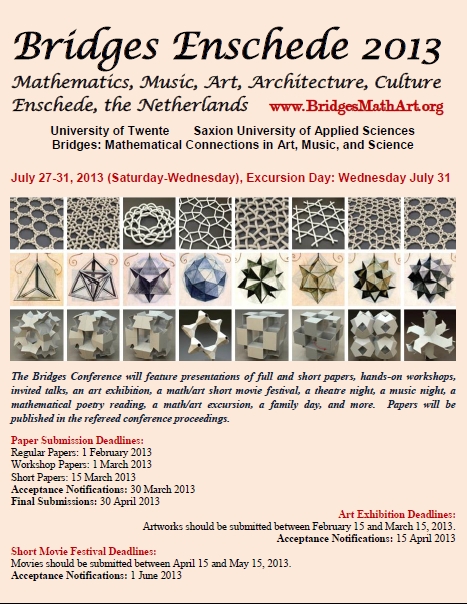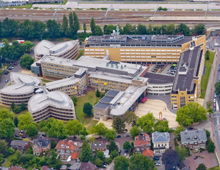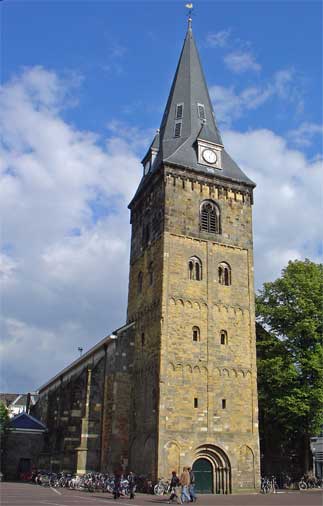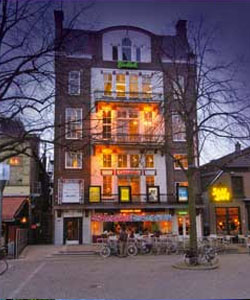Bridges Enschede 2013
FAMILY DAY & MATH-ART EXPO
Coordinated by Kristóf Fenyvesi, PhD
Director of Community Events, Bridges Organization
E-mail: familyday@bridgesmathart.org, Phone: +358-40-805-3324
Venues:
Grote Kerk (Oude Markt in Enschede)
Saxion University
(Maarten Harpertsz. Tromplaan 28 7513 AB Enschede)
Concordia (Oude Markt 15, 7511 Enschede)
Old Market Place, Enschede
Admission is FREE to ALL EVENTS of the Bridges Family Day!
- Bridges Math-Art Workshops at Saxion University, 1:30-6:00 PM
- Short Movie Festival at Saxion University, 1:30 – 3:00 PM and at Concordia, 4:00 – 5:00 PM (repeat)
- An Afternoon of Mathematical Poetry at Saxion University, 4:30 – 6:00 PM
- Mime-Matics Night at Grote Kerk, 8:00 – 9:00 PM
- Jardin Galerie’s Children and Youth Art Exhibit at Saxion University, 1:30 – 6:00 PM
1. Bridges Math-Art Workshops in Saxion University, 1:30 – 6:00 PM
Maarten Harpertsz. Tromplaan 28 7513 AB Enschede
1:30 – 6:00 PM: Zometool® Super C60
by Chern Chuang, Bih-Yaw Jin, Helen Yu, Paul Hildebrandt, thebeadedmolecules.blogspot.com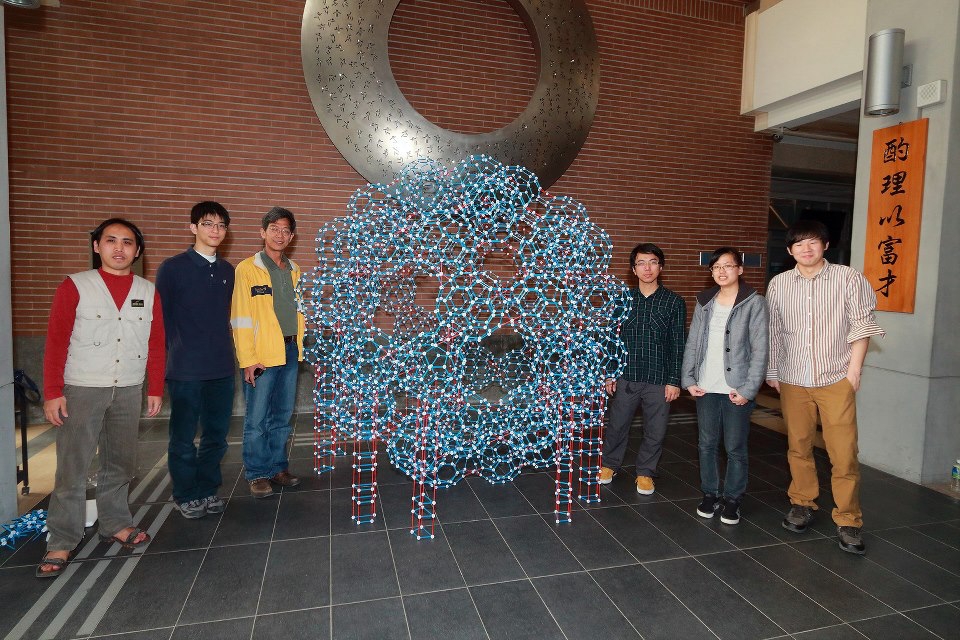 C60 is an iconic molecule often used to symbolize the advance of our knowledge in nanotechnology. And the super C60 is a hypothetical extension of C60 in the sense of Sierpiński’s, constructed by replacing each of the sixty carbon atoms by C60 itself. In this activity the participants will assemble the sixty C60s comprising the final superstructure with Zometool®. The first step of constructing individual C60s is simply a repetitive process and children above six can participate. We will give a brief introduction on Zometool® and the procedures of building a C60. In the meanwhile the instructors will start constructing the scaffold needed to hold the superstructure. The second part is more elaborate: to assemble the C60s at appropriate directions. The lower hemisphere, with the scaffold, needs to be built first. Following is the assembly of the upper hemisphere which will be set on top of the lower one. The last step is the trickiest part and should be taken with care.
C60 is an iconic molecule often used to symbolize the advance of our knowledge in nanotechnology. And the super C60 is a hypothetical extension of C60 in the sense of Sierpiński’s, constructed by replacing each of the sixty carbon atoms by C60 itself. In this activity the participants will assemble the sixty C60s comprising the final superstructure with Zometool®. The first step of constructing individual C60s is simply a repetitive process and children above six can participate. We will give a brief introduction on Zometool® and the procedures of building a C60. In the meanwhile the instructors will start constructing the scaffold needed to hold the superstructure. The second part is more elaborate: to assemble the C60s at appropriate directions. The lower hemisphere, with the scaffold, needs to be built first. Following is the assembly of the upper hemisphere which will be set on top of the lower one. The last step is the trickiest part and should be taken with care.
1:30 – 4:00 PM: Making Sierpinski Pyramid with 4D Frame
by Ho Gul Park, www.4dframe.com In this workshop we make a solid Sierpinski pyramid with 4DFrame. Each participant will make level 2 Sierpinski pyramid and connect with others. With this workshop, families and children may understand more the fractal structures and their role in nature. They also can enjoy the cooperative activity and have fun together.
In this workshop we make a solid Sierpinski pyramid with 4DFrame. Each participant will make level 2 Sierpinski pyramid and connect with others. With this workshop, families and children may understand more the fractal structures and their role in nature. They also can enjoy the cooperative activity and have fun together.
4:00 – 5:00 PM: Math on a Sphere
by Antranig Basman, http://mathsphere.org/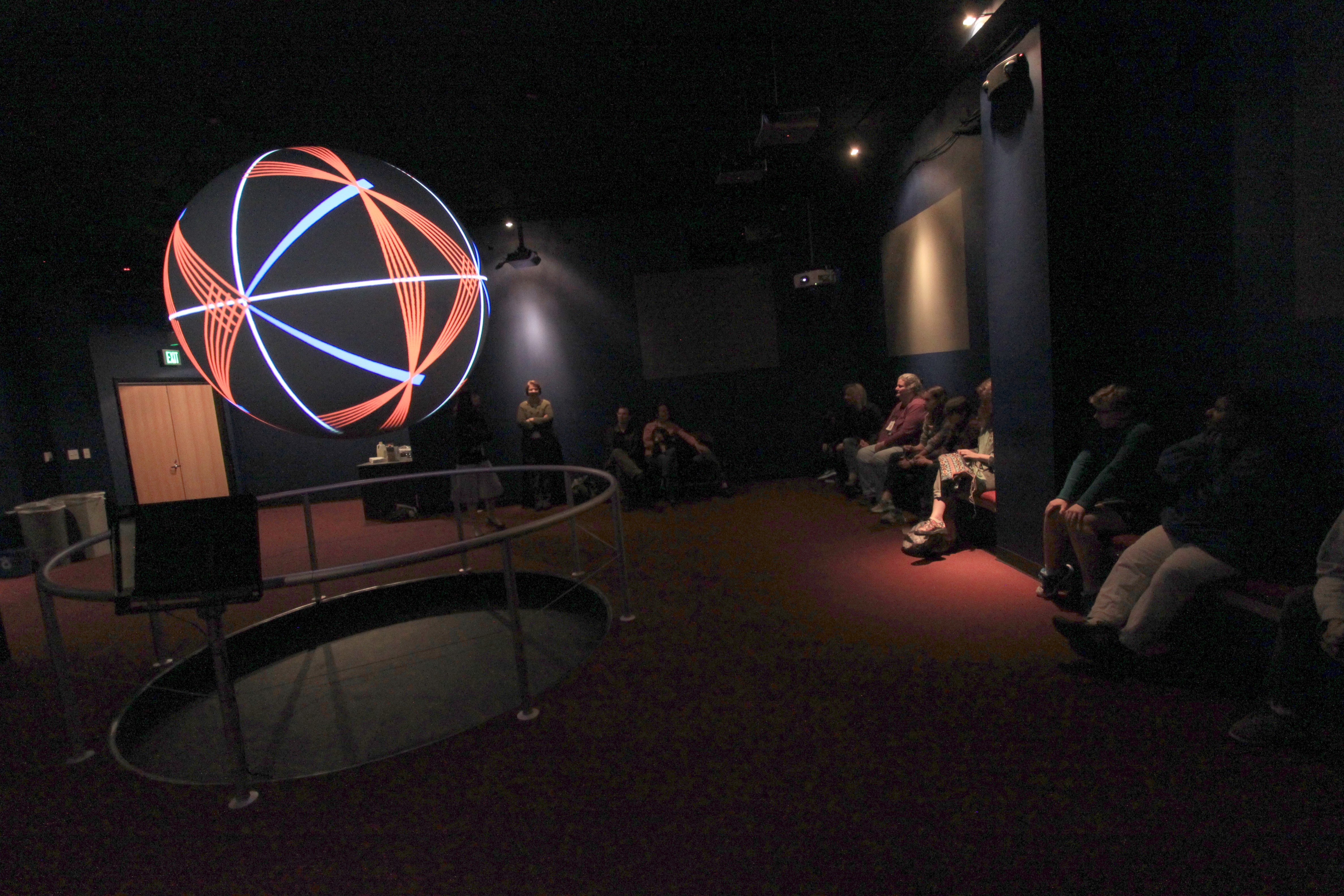 As well as presenting basic ideas on spherical geometry with posters and handouts, there will be an interactive exhibit where visitors can try out making their own interactive spherical designs using the web version of the interface to the sphere. Using a simple set of commands designed around the highly successful LOGO family of languages dating from the 60s, based on educational theories from Seymour Papert involving “body-syntonic reasoning”, students can understand the turtle’s motion by imagining what they would do if they were the turtle on the sphere.
As well as presenting basic ideas on spherical geometry with posters and handouts, there will be an interactive exhibit where visitors can try out making their own interactive spherical designs using the web version of the interface to the sphere. Using a simple set of commands designed around the highly successful LOGO family of languages dating from the 60s, based on educational theories from Seymour Papert involving “body-syntonic reasoning”, students can understand the turtle’s motion by imagining what they would do if they were the turtle on the sphere.
1:30 – 6:00 PM: Enfolding Epitahedra
by Renate Quehenberger, quantumcinema.uni-ak.ac.at/ “Enfolding Epitahedra” means playing with 5D- space cells. The double epitahedron E± is a 3D representation of the Penrose Kites and Darts Tiling, which is the Pattern of the Golden Ratio in the plane and a 2D slice of the 5-dimensional space. We will enfold those newly found heptahedra in all possible shapes and try to put them together in different compositions, such as the “star” and “sun” configurations. By arranging 12 of these seven-faced solids to a dodecahedron they are revealing their higher dimensional properties,- as 4-dimensional dodecahedra with configurations in the center which are containing quantum-mechanically possible structures. What else will we discover together this afternoon?
“Enfolding Epitahedra” means playing with 5D- space cells. The double epitahedron E± is a 3D representation of the Penrose Kites and Darts Tiling, which is the Pattern of the Golden Ratio in the plane and a 2D slice of the 5-dimensional space. We will enfold those newly found heptahedra in all possible shapes and try to put them together in different compositions, such as the “star” and “sun” configurations. By arranging 12 of these seven-faced solids to a dodecahedron they are revealing their higher dimensional properties,- as 4-dimensional dodecahedra with configurations in the center which are containing quantum-mechanically possible structures. What else will we discover together this afternoon?
4:30 – 6:00 PM:Counting and dancing: Sardana
by Miriam Fadera Gajo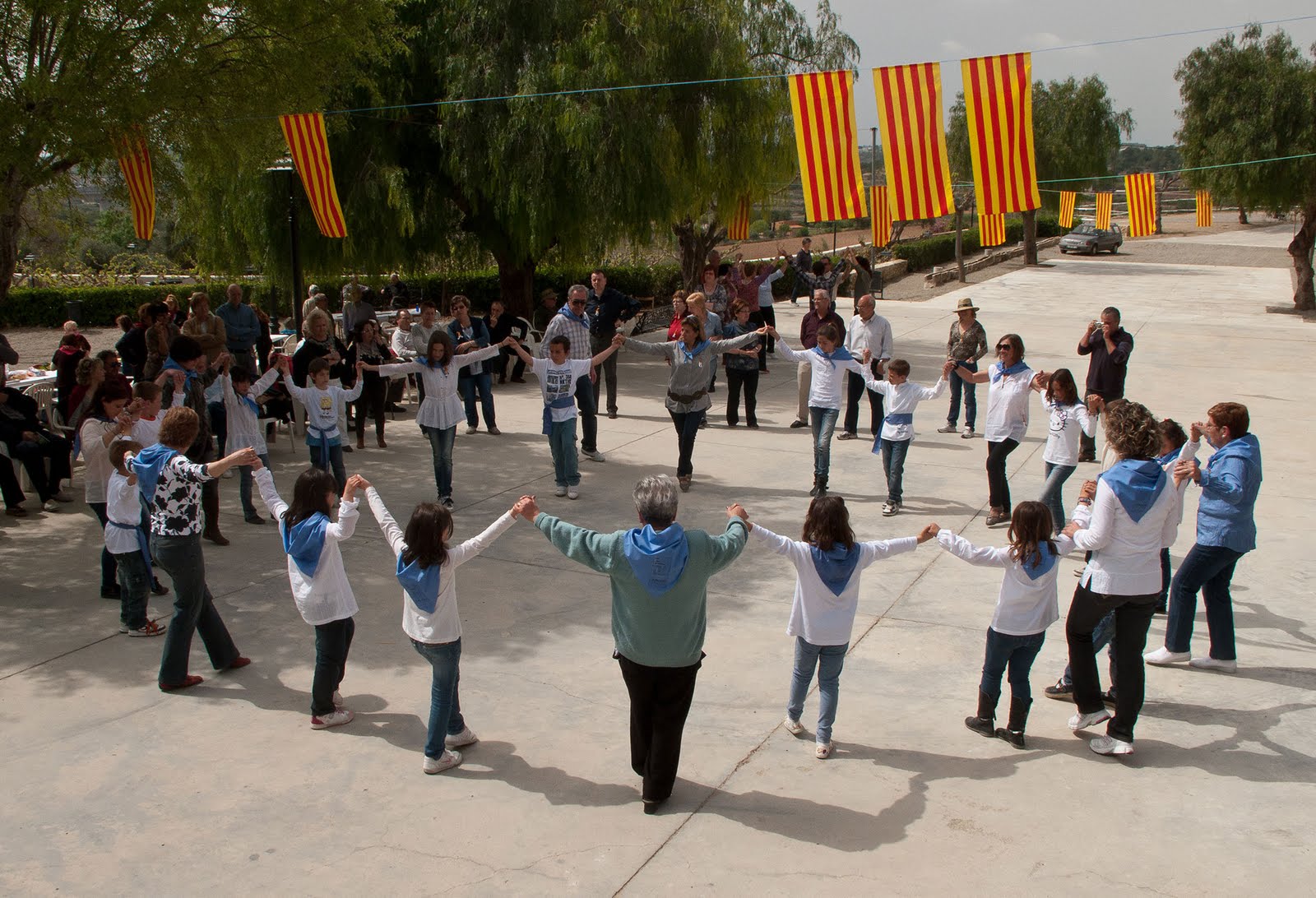 We are going to learn how to count and distribute. During the first part of the workshop we are going to listen to the music and do the calculations in order to apply the correct steps. In the second part we are going to learn how to dance sardana. At the end we can join all together in a sardana song and dance.
We are going to learn how to count and distribute. During the first part of the workshop we are going to listen to the music and do the calculations in order to apply the correct steps. In the second part we are going to learn how to dance sardana. At the end we can join all together in a sardana song and dance.
1:30 – 3:30 PM: Have you ever amazed by the wonderful symmetries of Persian art? Come and make your own design!
by Mojgan Lisar Tazhib (Illumination) is a classical Persian art for the decoration of treatise and books. It has an intertwining relationship with calligraphy. In the medieval Persia, a highly refined art of Tazhib developed that its tradition has continued even today. In a traditional Persian Tazhib one can find mathematical ideas and concepts such as symmetries, logarithm and Archimedean spirals, polygons and star polygons. We use the traditional methods used in this art to create a Tazhib symbol.
Tazhib (Illumination) is a classical Persian art for the decoration of treatise and books. It has an intertwining relationship with calligraphy. In the medieval Persia, a highly refined art of Tazhib developed that its tradition has continued even today. In a traditional Persian Tazhib one can find mathematical ideas and concepts such as symmetries, logarithm and Archimedean spirals, polygons and star polygons. We use the traditional methods used in this art to create a Tazhib symbol.
1:30 – 6:00 PM: Stencil Madness
by Amina Buhler-Allen Create your own geometric designs. While making art with your own hands, see, learn and understand mathematical concepts-by doing. Many patterns appear 3-Dimensional, especially when colored. Just bring yourself; ready to explore & make some art! Go home with your own masterpiece.
Create your own geometric designs. While making art with your own hands, see, learn and understand mathematical concepts-by doing. Many patterns appear 3-Dimensional, especially when colored. Just bring yourself; ready to explore & make some art! Go home with your own masterpiece.
2:00 – 6:00 PM: 3D Polyfelt
by José L. Rodríguez, www.polifieltros3d.com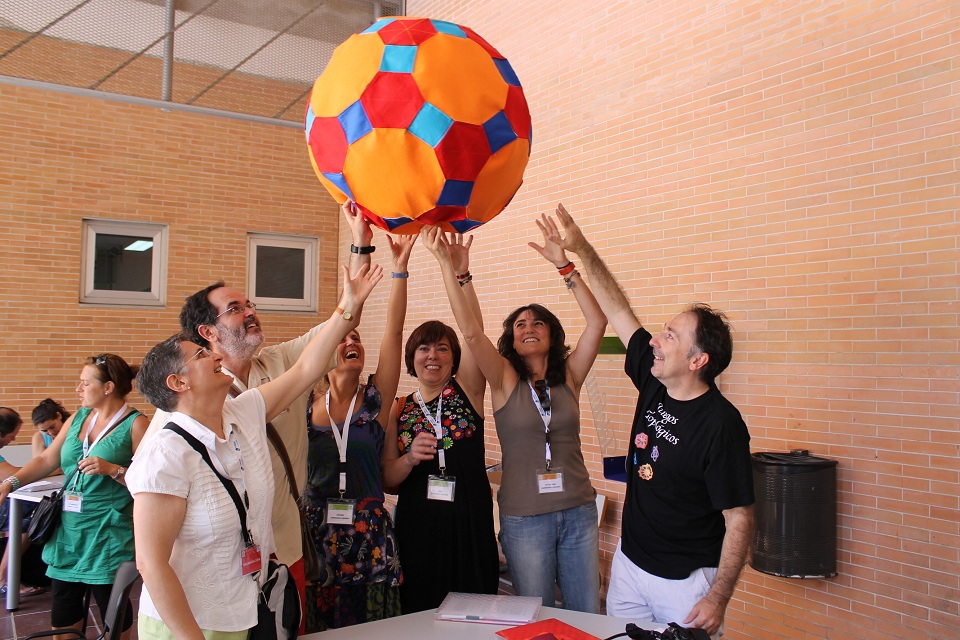 3D Polyfelt® is a new mathematical toy made with pieces of felt. Playing with 3D Polyfelt® means fun and learning by assembling all kind of geometric shapes, such as Platonic or Archimedean solids, stellated polyhedra, all kind of tilings, cilinders, cones, topological surfaces, fractals as the Sierpinski tetrahedron or the Menger sponge, and also bags, dresses, and many other creative designs. The material is flexible and you can twist it much easier than paper or cardboard, assemble and disassemble it as many times you like – and 3D Polyfelt® is a useful tool for all educational levels.
3D Polyfelt® is a new mathematical toy made with pieces of felt. Playing with 3D Polyfelt® means fun and learning by assembling all kind of geometric shapes, such as Platonic or Archimedean solids, stellated polyhedra, all kind of tilings, cilinders, cones, topological surfaces, fractals as the Sierpinski tetrahedron or the Menger sponge, and also bags, dresses, and many other creative designs. The material is flexible and you can twist it much easier than paper or cardboard, assemble and disassemble it as many times you like – and 3D Polyfelt® is a useful tool for all educational levels.
1:30 – 6:00 PM: Building Polyhedra with Giant Triangles
by Simon Morgan, George Connell, Eva Knoll, mathgianttriangles
Giant polyhedra will be built to be explored from the outside and inside. People coming to see can also build their own polyhedra.
1:30 – 6:00 PM: Packing Shadows
by Anna Weltman and Joel Weber, mathmunch.org How many circles can you fit – and what kinds of beautiful patterns can you make? Circle packing is both mathematically interesting and aesthetically attractive. It’s also accesible to math learners and artists of all ages and ranges of experience. In this activity, participants arrange hollow cylinders of various diameters within a set frame. Artists can chose to pack circles of the same size or of different sizes, exploring appealing ways of filling space with circles. When the artist has filled the space as they like, the arrangment is placed on photo-sensitive paper and set in the sun (or under a UV light) to create a photogram, a photographic image made without a camera. This process preserves the arrangement as a cynotype, a two-tone, blue and white image, and creates a wonderful geometrically-inspired piece of art. The shadows cast by the cylinders are an additional artistic and mathematical element, as they encourage the artist to further play with symmetry and curvature.
How many circles can you fit – and what kinds of beautiful patterns can you make? Circle packing is both mathematically interesting and aesthetically attractive. It’s also accesible to math learners and artists of all ages and ranges of experience. In this activity, participants arrange hollow cylinders of various diameters within a set frame. Artists can chose to pack circles of the same size or of different sizes, exploring appealing ways of filling space with circles. When the artist has filled the space as they like, the arrangment is placed on photo-sensitive paper and set in the sun (or under a UV light) to create a photogram, a photographic image made without a camera. This process preserves the arrangement as a cynotype, a two-tone, blue and white image, and creates a wonderful geometrically-inspired piece of art. The shadows cast by the cylinders are an additional artistic and mathematical element, as they encourage the artist to further play with symmetry and curvature.
1:30 – 6:00 PM: SAXON @ the SAXION: SAXON‘s PolyUniverse Toys
by János Saxon Szász and Zsuzsa Dárdai, Poly-Universe Ltd.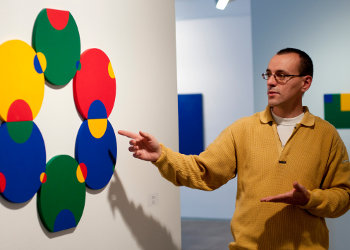 You may arrange the colored plastic sheets of the PolyUniverse artistic game on the table as you like them. A bigger colored figure appears in front of you when you put all the sheets down. There are various forms at the corner of the sheets with different colors and sizes. Depending on how you placed the sheets, these forms will show different figures. There will be symmetric figures, and also chaotic ones. It’s possible that some will resemble even flowers or crystals! Millions of variations and it depends on your imagination how the final picture will look like!
You may arrange the colored plastic sheets of the PolyUniverse artistic game on the table as you like them. A bigger colored figure appears in front of you when you put all the sheets down. There are various forms at the corner of the sheets with different colors and sizes. Depending on how you placed the sheets, these forms will show different figures. There will be symmetric figures, and also chaotic ones. It’s possible that some will resemble even flowers or crystals! Millions of variations and it depends on your imagination how the final picture will look like!
1:30 – 6:00 PM: Create geometric art with ITSPHUN. It’s fun!
by the ITSPHUN LLC
We’ll bring lots of ITSPHUN pieces made of various materials (craft foam, plastic, paper), spread it on the tables, and let everybody build their own creations. The construction method is very simple and intuitive and most participants don’t need much assistance, but we’ll be on hand for help and advice.
1:30 – 3:00 PM: Origami & Mathematics: bow-tie models
by Wojtek Burczyk, www.origami.edu.pl
Participants make simple 3D origami model and / or mosaic.
3:00 – 4:30 PM: Origami & Mathematics: twirls
by Wojtek Burczyk, www.origami.edu.pl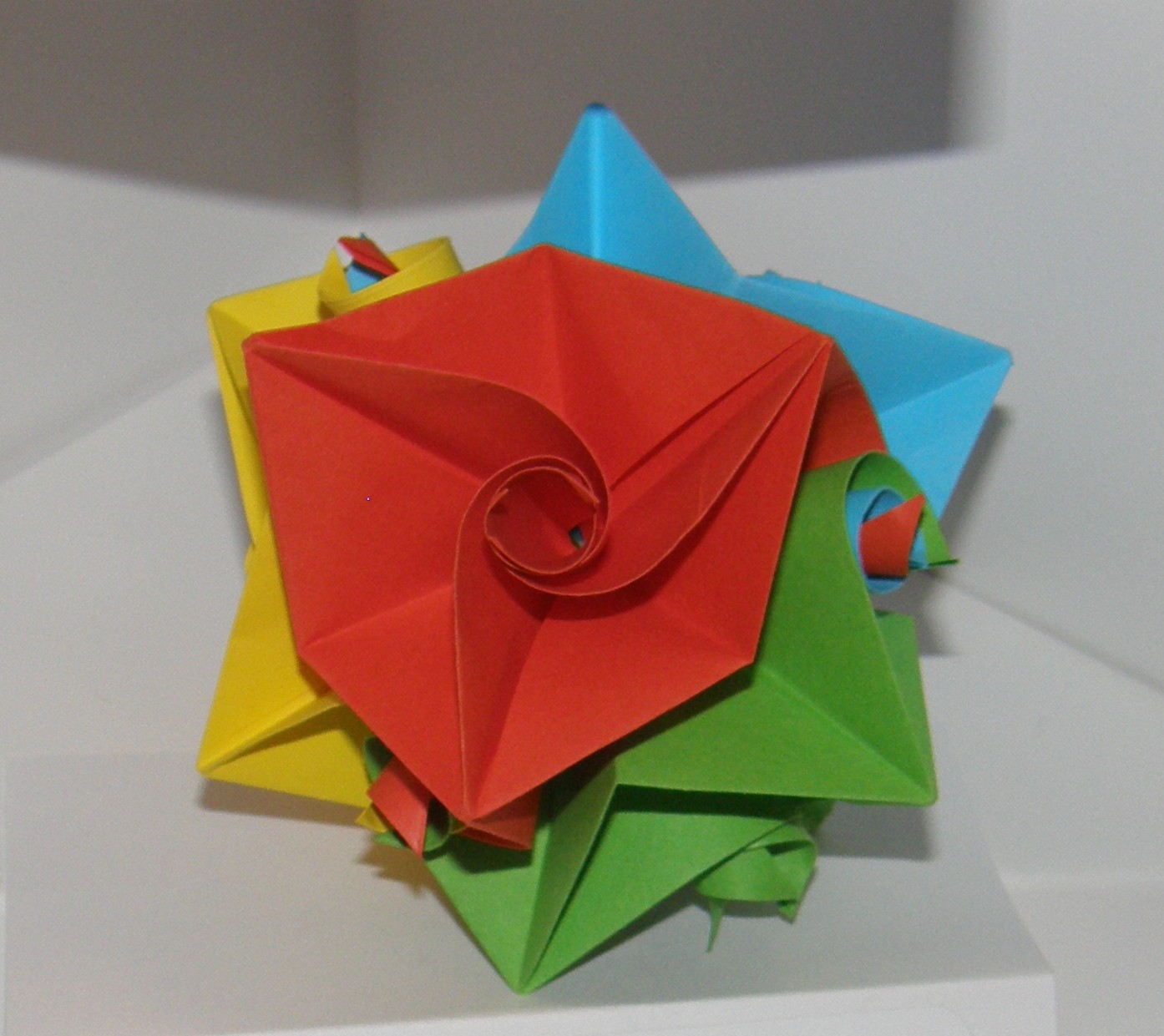 Participants of the workshop will fold twirl modules and then assemble them into twirl kusudama model. The model has flower-like appearance and strong geometrical background. Some information how to make another models based on the same principle will be provided to participants.
Participants of the workshop will fold twirl modules and then assemble them into twirl kusudama model. The model has flower-like appearance and strong geometrical background. Some information how to make another models based on the same principle will be provided to participants.
*Model consists of 12 pieces, some accuracy and patience is required, so the workshop is not suitable for children under 15.
1:30 – 6:00 PM: Moving in to a Geodesic Dome
by Biagio Di Carlo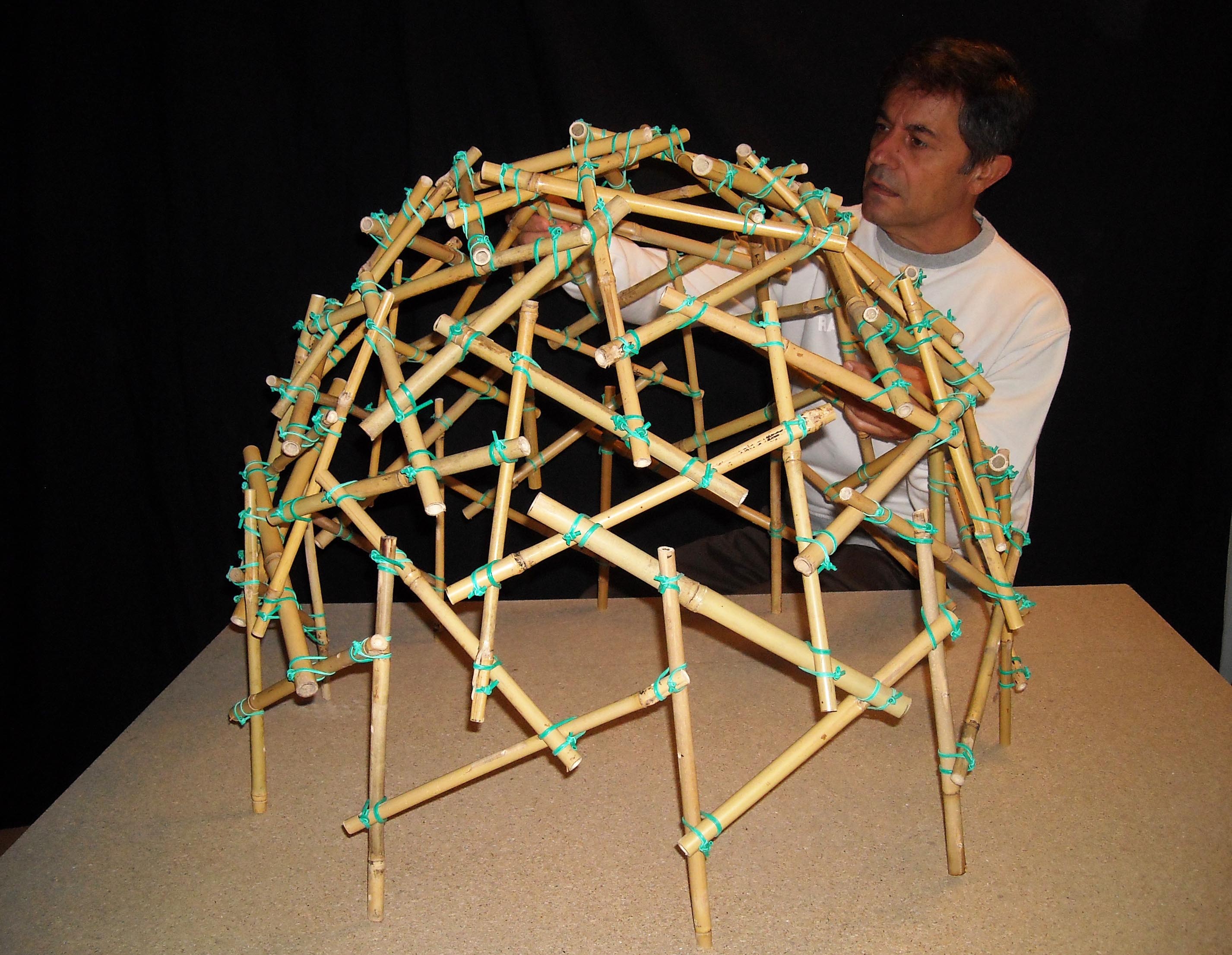 In this workshop we explore the potential of the triangulated forms by using the reciprocal frame jointing. The goal is to achieve that synthesis that Leonardo was talking about, a synthesis that brings to gain art in science and science in art in all our works. The science of design is the geometric bridge between art and science. Geometry becomes an intermediary between harmony and unity of the natural world. Geometry is not an human invention but a creation of nature, man has learned from nature itself.
In this workshop we explore the potential of the triangulated forms by using the reciprocal frame jointing. The goal is to achieve that synthesis that Leonardo was talking about, a synthesis that brings to gain art in science and science in art in all our works. The science of design is the geometric bridge between art and science. Geometry becomes an intermediary between harmony and unity of the natural world. Geometry is not an human invention but a creation of nature, man has learned from nature itself.
1:30 – 3:30 PM: Symmetry Workshop
by Jean Constant and Tiffany Inglis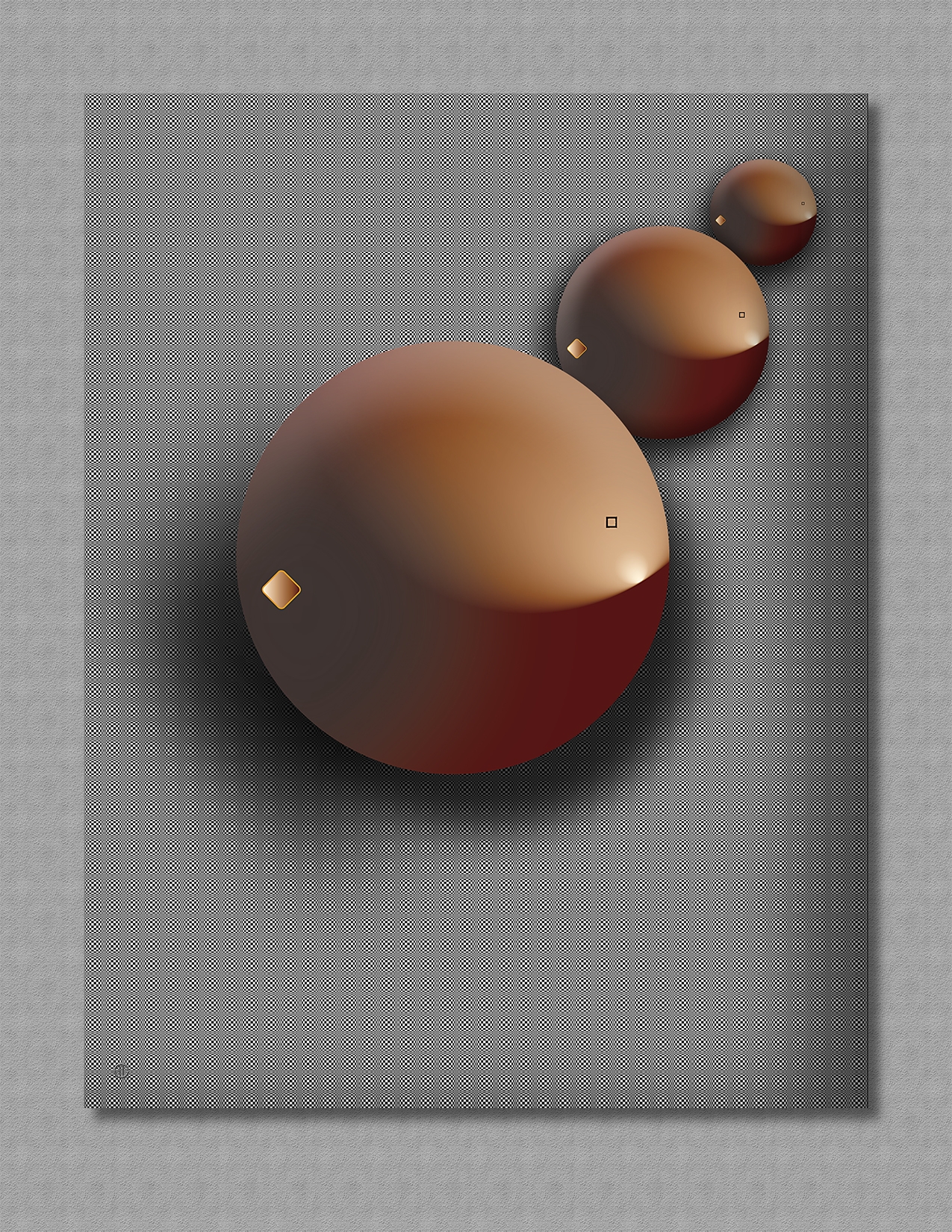
The purpose of this workshop is to investigate Symmetry in Mathematics, Physics and Art. Participants will develop their own personal digital artwork from examples of the 32 crystallographic point groups symmetries and will be invited to evaluate the concept of beauty, balance and harmony as applied to visual communication and art. No previous knowledge of computer graphic application needed.
1:30 – 6:00 PM: Quilt fun with √3
by Elaine Krajenke Ellison, www.mathematicalquilts.com 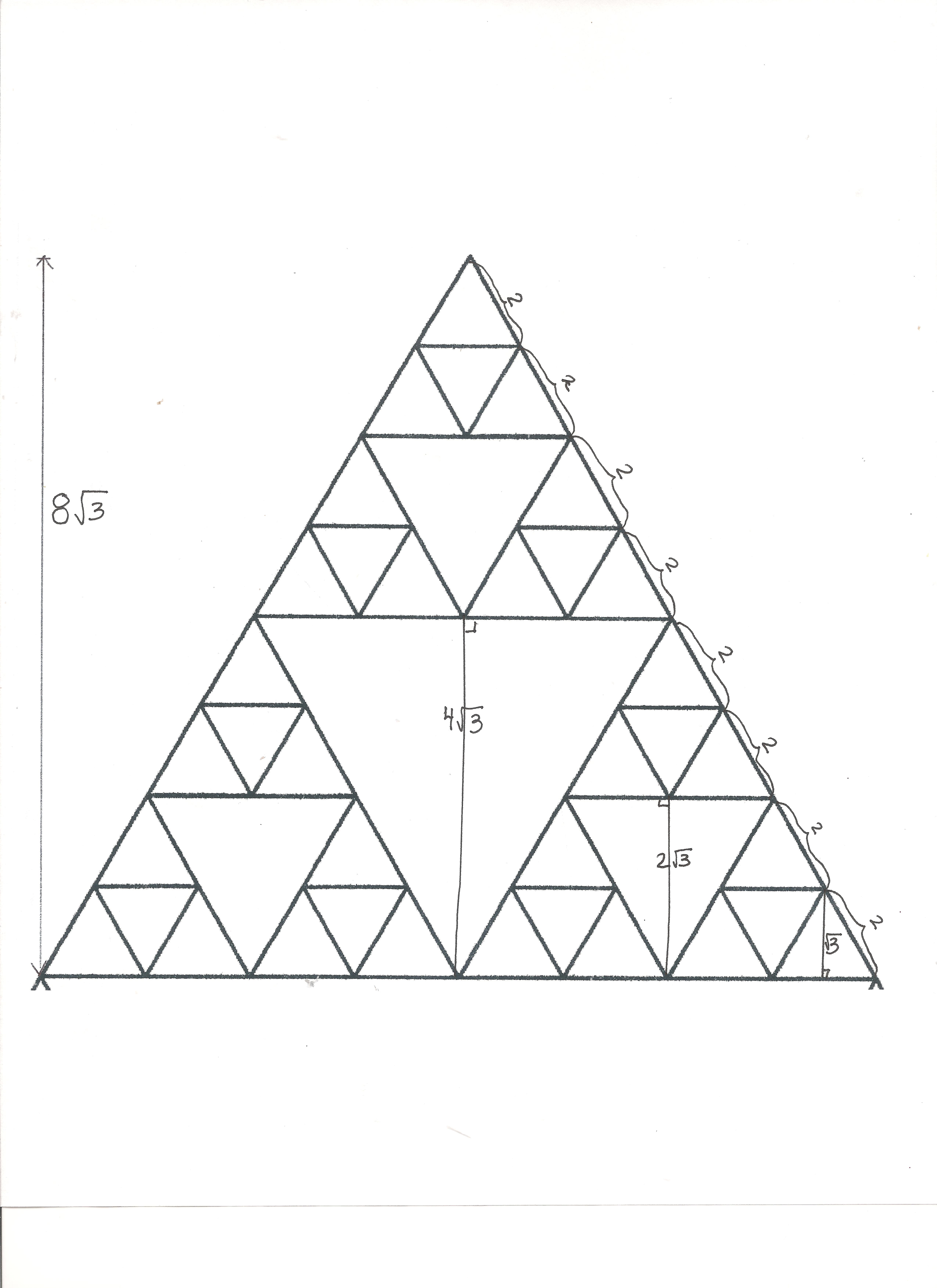 Each participant will be given a 2-sided tag board pattern. The mathematics of using the √3 will be shown and explained. the second side of the activity will have the quilt pattern with no color on it. The participants will cut colored paper or sticky felt paper patterns. The color will be added by the participant using materials provided. A beautiful mathematical design called Sierpinski’s triangle!
Each participant will be given a 2-sided tag board pattern. The mathematics of using the √3 will be shown and explained. the second side of the activity will have the quilt pattern with no color on it. The participants will cut colored paper or sticky felt paper patterns. The color will be added by the participant using materials provided. A beautiful mathematical design called Sierpinski’s triangle!
1:30 – 6:00 PM: String Art: Ojos de Dios
by John Edward Alvarez
In this workshop you can learn how use yarn or string and popsicle sticks to create a beautiful piece of art. We will be reviewing basic math vocabulary and review other math concepts that are related art.
Workshops start at 1:30 PM, 2:30 PM, 3:30 PM, 4:30 PM for 15 participants/group
1:30 – 6:00 PM: Get lost and find your way in the Amazing Labyrinths!
by Samuel Verbiese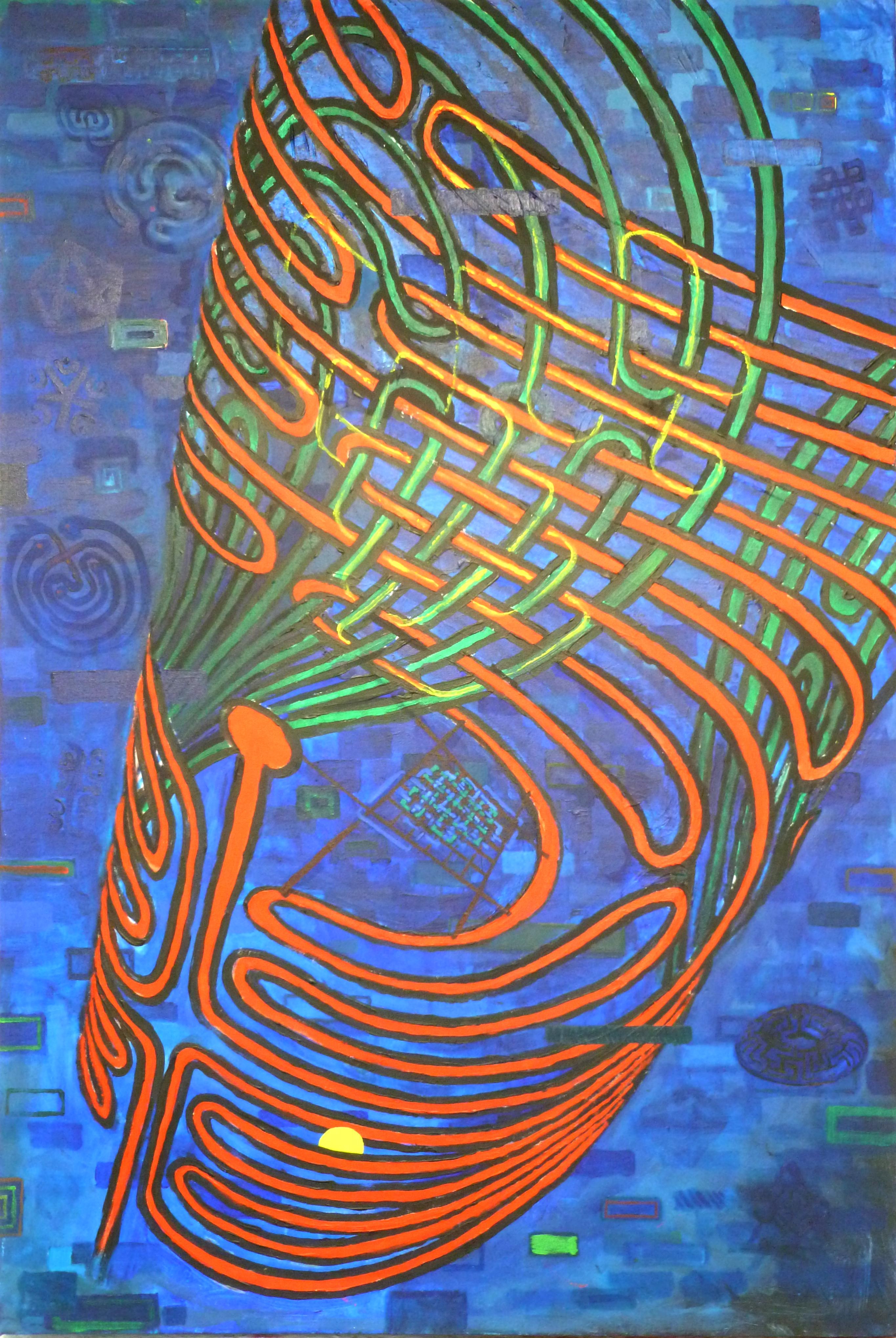 Using his 10 years experience in labyrinths and storytelling skills, Sam, a visual artist with an engineering background which naturally took him to polyhedra, knots, etc., would like to embark children and their parents into a playful immersion into the geometrical magic of labyrinths that evolved during thousands of years from the spiral and meanders to the Cretan iconic labyrinth to the Chartres masterpiece and beyond, including 3D. Participants will get a thorough basis to grasp the differences and complementarities between labyrinths and mazes and learn to rapidly create large interesting labyrinths on sea shores, gardens, and here at the workshop with colorful chalks on the floor.
Using his 10 years experience in labyrinths and storytelling skills, Sam, a visual artist with an engineering background which naturally took him to polyhedra, knots, etc., would like to embark children and their parents into a playful immersion into the geometrical magic of labyrinths that evolved during thousands of years from the spiral and meanders to the Cretan iconic labyrinth to the Chartres masterpiece and beyond, including 3D. Participants will get a thorough basis to grasp the differences and complementarities between labyrinths and mazes and learn to rapidly create large interesting labyrinths on sea shores, gardens, and here at the workshop with colorful chalks on the floor.
1:30 – 6:00 PM: The Star Cage Mini-Exhibit
by Akio Hizume, www.starcage.org
In his presentation and mini-exhibit Akio Hizume will show many geometric objects based on the Golden Ratio and also tell how to “activate” these objects.
1:30 – 6:00 PM: Nuria Juncosa’s Mini-Exhibit, www.la-nuria.com In Nuria Juncosa’s mathematical compositions the placement of lines and planes are defined by mathematical relationships. Her work is of an experimental nature and is centred on the investigation of concepts like space, motion and patterns.Symmetry is the core of her research. In her use of colour she look for the interaction of complementary colours when juxtaposed and the dynamics between light and colour perception. She is also interested on applying colours that are related by distances in the spectrum also defined by mathematical relationships.
In Nuria Juncosa’s mathematical compositions the placement of lines and planes are defined by mathematical relationships. Her work is of an experimental nature and is centred on the investigation of concepts like space, motion and patterns.Symmetry is the core of her research. In her use of colour she look for the interaction of complementary colours when juxtaposed and the dynamics between light and colour perception. She is also interested on applying colours that are related by distances in the spectrum also defined by mathematical relationships.
2. Short Movie Festival in two sessions at Saxion University (Maarten Harpertsz. Tromplaan 28 7513 AB Enschede) 1:30-3:00 PM and at Concordia (Oude Markt 15, 7511 Enschede) 4:00 – 5:00 PM (repeat)
1:30-3:00 PM at Saxion University (Maarten Harpertsz. Tromplaan 28 7513 AB Enschede) and 4:00-5:00 PM (repeat) at Concordia (Oude Markt 15, 7511 Enschede): The 4th Annual Bridges Short Movie Festival will include a variety of juried and curated videos and short films. The program will include movies, videos and animations that have been created for educational, corporate and artistic purposes, and will provide another opportunity for attendees to experience innovative and integrative techniques in the fields of mathematics and art.
Coordinators: Amy and Nathan Selikoff
3. An Afternoon of Mathematical Poetry at Saxion University Lecture Room 1 (Maarten Harpertsz. Tromplaan 28 7513 AB Enschede), 4:30-6:00 PM
Newton’s binomial is as beautiful as Venus de Milo.
What happens is that few people notice it.
-Fernando Pessoa (as Álvaro de Campos)
translated from the Portuguese by Francisco Craveiro
4:30-6:00 PM at Saxion University Lecture Room 1 (Maarten Harpertsz. Tromplaan 28 7513 AB Enschede): Coordinated by Sarah Glaz, professor of mathematics at the University of Connecticut and poet, the poetry readings at Bridges feature poetry with strong links to mathematics and a wide range of poetic styles. The program starts with a number of invited poets reading selections from their work, followed by an open microphone period where Bridges participants are invited to read their own mathematical poems. Selected poems from the reading will appear in the Bridges Poetry Anthology. Poets are encouraged to share more of their art and scholarship by submitting articles for talks or workshops, visual poems to the gallery, or poetry with animated or musical elements for the short movie festival.
Detailed program of the Mathematical Poetry Afternoon (click!)
Information about the coordinator and the invited poets, including sample poetry (click!)
4. Mime-Matics Night at Grote Kerk (Oude Markt in Enschede), 8:00 – 9:00 PM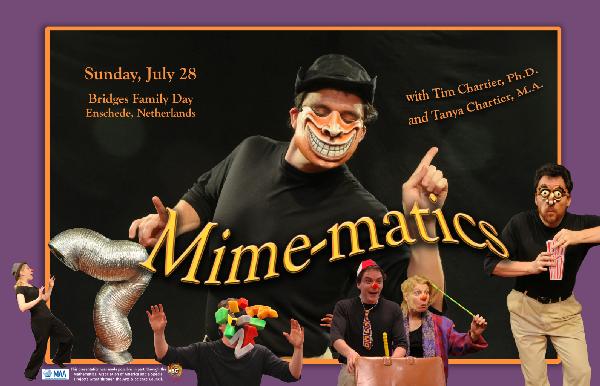
8:00-9:00 PM at Grote Kerk (Oude Markt in Enschede): Tim and Tanya Chartier’s mime combines masks, puppetry, and classical mime illusions into a distinctive style that they have performed throughout the United States and in national and international settings. The Chartiers have trained at Le Centre du Silence mime school, the Dell’Arte School of International Physical Theater and with the world-renowned mime artist Marcel Marceau.
Dr. Tim Chartier is a professor of mathematics at Davidson College, North Carolina, USA. His ability to communicate math both in the classroom and through mime to the broader community was recognized by a national teaching award from the Mathematical Association of America. His research and scholarship were recognized with an Alfred P. Sloan Research Fellowship. Tim serves on the Editorial Board for Math Horizons, a mathematics magazine of the Mathematical Association of America. He also serves as chair of the Advisory Council for the Museum of Mathematics. Tim has been a resource for a variety of media inquiries which includes fielding mathematical questions for the Sports Science program on ESPN. Please see an article, “Envisioning the Invisible”, that Dr. Chartier, wrote on mime and math for Notices of the AMS.
Tanya Chartier has taught theater at the middle school level and is currently an Educational Specialist for a center for academic learning in the town of Davidson and taught in the spring of 2012 in the Education Department at Davidson College. Between her undergraduate studies in English Literature at Denison University and graduate studies in the Teaching of Reading at Western Michigan University, Tanya studied literacy in Japan as a Fulbright Fellow.
This performance is supported by MAA (The Mathematical Association of America).
5. Jardin Galerie’s Children and Youth Art Exhibit at Saxion University (Maarten Harpertsz. Tromplaan 28 7513 AB Enschede), 1:30 – 6:00 PM
Curated by
John Arden Hiigli, founder-president of Jardin Galerie
&
Kristóf Fenyvesi, Director of Community Events, Bridges Organization
Jardin Gallery will present a screened exhibition which will include a brief description of the work of the gallery (1), a selection of slides that illustrate why art is important (2), a recapitulation of the Bridges 2012 Jardin Gallerie Children & Youth Art Exhibition Bridges of the World (3), a selection of slides that illustrate Math/Art as Curriculum Core (4), and a selection of drawings of bridges in Central Park (New York City) by preschool children at Le Jardin a l’Ouest (5).
6. Science and art of cooking at Grote Kerk (Oude Markt in Enschede) 2:00 – 4:00 PM
Ever wondered what happens when you boil an egg? Or how you can make use of dispersions or suspensions in making a delicious dressing? In modern cooking, chefs make use of scientific knowledge on the chemistry and textures of food to tease your imagination. With a short introduction of MESA+ scientist Gertjan Koster, experiments by Science on Tour (University of Twente) and a tasting experience by chef Gordon Bok (Umami Art), we will try to give you a glimpse of what molecular gastronomy is all about.
14:00-14:20 Introduction
14:20-15:20 experiments and tasting
15:20-15:30 intermezzo
15:30-16:00 tapas and tasting
Umami Art
Gertjan Koster
Science on Tour
7. Nano Supermarket at the Old Market Place of Enschede, 1:00 PM – 5:00 PM
8. Visit at Twekkelo (close to Enschede): A Lovely Place
‘Twekkelo’ is the name of the countryside between the cities of Enschede and Hengelo. It is an area with a high level of landscaping and cultural-historical qualities. The local population is well organized to resist the urban pressure and to preserve the beauty that Twekkelo offers. In this framework SART (ARTwekkelo Foundation) has set up a project called A Lovely Place. Through interviews and workshops information is gathered about love stories, favorite spots and memories with the countryside as background. A generous source of authenticity is unlocked and has inspired visual artists, musicians and poets to create a work of art. The collected information is and will be elaborated into contemporary forms of art in various art disciplines like theatre, poetry, multimedia, fine arts and music. The source of information offers the input for large-scale art events in three successive years. The 2nd event takes place on Sunday the 28th of July in Twekkelo.
The program shows the following elements:
14.00 Poetry and music in the Johanneskerk (a small church) in Twekkelo
15.00 Performance of the visual theatre group Roest
15.30 The Art Mile Twekkelo: a first walk along 9 works of art.
Three of them were constructed for the 2012 art event and 6 for the 2013 event, works of art that underline Twekkelo as a lovely place.
16.30 Social meeting and drinks at Ateliers Het Elkeman
